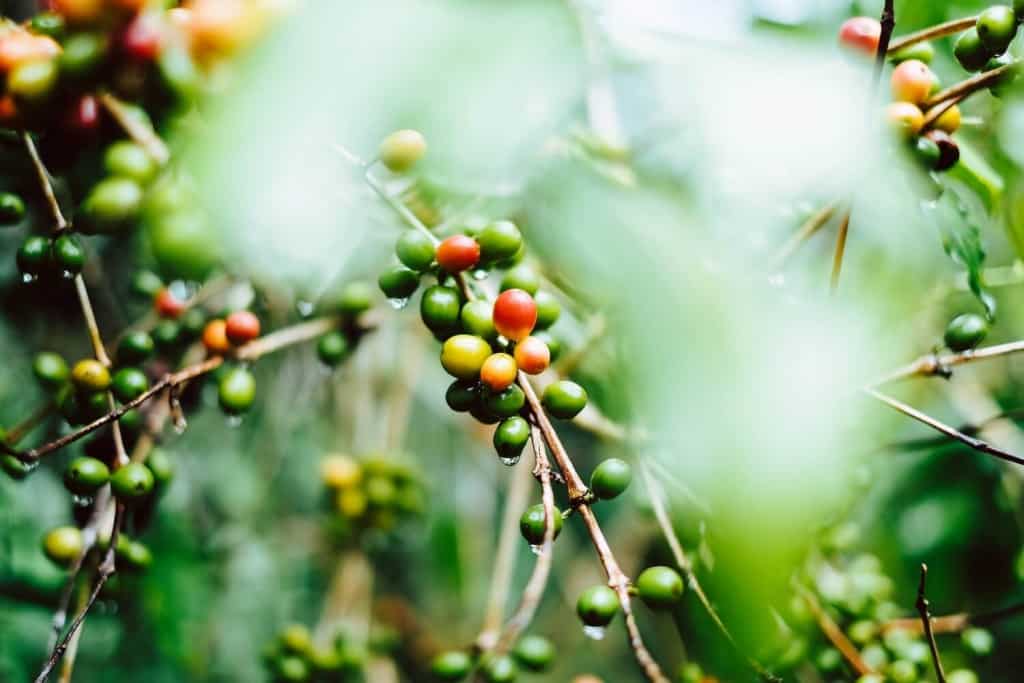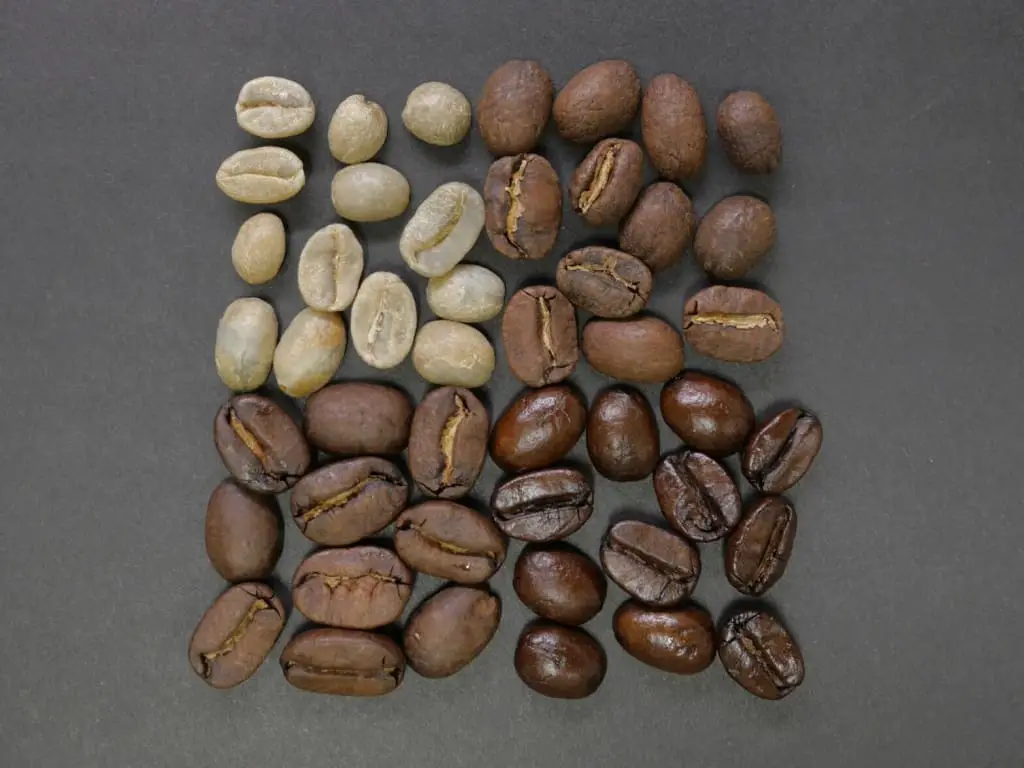As an Amazon Associate I earn from qualifying purchases.
Coffee is all about taste. Sure, it’s the world’s go-to beverage for a morning pick-me-up, thanks to its stimulating caffeine content, but most of us don’t drink coffee just to get a kick out of bed. We drink coffee because of its unique, delicious flavor.
However, coffee beans don’t exactly come out of the ground with that signature taste we all know and love. The key to bringing out that characteristic, rich flavor of coffee is roasting.
In any case, there’s no single type of coffee roast. Whether it’s in a specialty coffee shop or just the local market, you’ve noticed that there’s a variety of coffee roasts, ranging from light to dark, and each of them has a unique flavor. To help you decide what type of roast you’re into, let’s take a look at the different types of coffee roasts, as well as how roasting changes the taste of the green coffee beans.
What’s Coffee Roasting?
Roasting green coffee beans triggers a chemical reaction that changes the taste of the coffee, turning it into a consumable product. While unroasted green beans have a similar makeup to roasted coffee – like the amount of caffeine, protein, sugar, and acid – they lack the beautiful taste that roasted coffee has been giving us since roasting became a thing in 15th-century Persia and the Ottoman Empire.
Several chemical reactions occur when green beans are roasted. One of them is the Maillard reaction – a chemical reaction between amino acids and reducing sugars – which is also responsible for the beautifully popping flavors and colors of seared steaks, caramel, toasted bread, marshmallows, cookies, chocolate, and even beer!

The different types of coffee roasting are a result of how long and at what temperature coffee beans are roasted. In general, beans are roasted by quickly increasing their internal temperature to high degrees, and then being quickly cooled to end the roasting process. Unlike green beans, roasted beans have that scent that, to us, is coffee, and are crunchy, since all the moisture has been removed.
For the most flavorful cup of coffee, you’ll want to use freshly roasted and ground beans. You can always ground your beans yourself by getting a great little manual coffee grinder for your home.
The Different Types of Coffee Roasts
Let’s take a look at the different types of coffee roasts, what temperature they require, how they taste, and what some popular roast names are in each category.

Light Roasts
The first step on the coffee-roasting ladder are light roasts. Light roasts are brightly colored, have the highest level of acidity, and in general retain most of the coffee’s original features.
Light roasts are achieved when the bean is pulled out from the heat after the first crack. This usually means that lightly roasted beans reach an internal temperature between 356°F and 401°F.
Although people usually think the darker the bean the higher the caffeine content, green beans and therefore light roasts have the highest caffeine content, as the caffeine content decreases with continued roasting and higher temperatures.
Light roasts have a light brown color and don’t have any oil on the bodies of the beans, as they haven’t been roasted long enough for the oils to seep out.
Light roasts have the taste of a toasted grain, and have a slightly pronounced acidity. They also have a more fruity scent, which makes the origin of the coffee bean more easily detectable for the coffee connoisseur. Although you can use any roast for any coffee brewing method, coffeeshops usually prefer using light roasts for milder coffee types, such as pour-over coffee and drip brews.
Some popular light roasts are Cinnamon, New England Roast, Light City and Half City.
Medium Roasts
Medium roasts are apparently the favorite of people in the United States, which is why they’re sometimes referred to as the American roast (although George Carlin had a different take on an American roast, amirite?). Overall, medium roasts strike a delicious balance between body and acidity.
Medium roasts are roasted longer than light roasts, and thus reach a higher internal temperature which is somewhere between 410°F and 428°F. Medium roasted beans usually reach this temperature after the first crack, and right before the beginning of the second crack.
Medium roasted beans have less caffeine than light roasts, but more caffeine that medium-dark and dark roasts.
Medium roasted coffee has a brown (sometimes specified as medium-brown) color, and no oil on the surface of the bean. In terms of taste, medium roasts have a stronger and sweeter taste than light roasts, but they also have less of that grainy scent. Overall, the aroma, flavor, and acidity of light roasts are quite beautifully balanced, which is probably why medium roasts are a popular favorite.
Some popular roasts in the medium category are American roast, Breakfast Roast, City Roast, and Regular Roast.
Medium-Dark Roasts
Medium-dark roasted beans are dark brown, with finally some oil beginning to show on the surface. This is because they’re roasted just long enough to get the essential oils moving, bolden the flavor, and activate a whole new host of seductive scents that tickle your sensations. Medium-dark and dark roasts have a richer taste and bolder bodies.
Medium-dark roasts generally reach an inner temperature of about 437-450°F. This happens around the beginning or middle of the second crack. The longer, hotter process allows for the taste and aroma of roasting to become more pronounced.
Medium-dark roasts have a rich, almost spicy, full-bodied taste – certainly heavier than that of light and medium roasts – with aromas and flavors that are fully unleashed. In this process, the acidity in the flavor virtually disappears. Rather, medium-dark roasts have a unique bittersweet aftertaste.
Keep in mind that while light and medium roasts have more pronounced acidity, medium-dark and dark roasts have a more pronounced bitterness. So next time you’re at a coffee tasting (perhaps in the coziness of your kitchen), pay attention to this difference and see which one tickles your fancy.
Some popular medium-roasts you may have come across are Full City, Vienna Roast (which borders on a dark roast), and After Dinner Roast.
Dark Roasts
Darkly roasted coffee beans have the darkest color, which can range from dark brown, like the color of dark chocolate, to almost black. They have quite a bit of oil on the surface, which gives the beans a lovely sheen. Dark roasts offer a rich, full-bodied, smokey, and almost burnt taste which is a result of the roasting process, so the original taste of the green coffee bean is pretty much gone at this point.
To create a dark roast, the beans need to reach the highest internal temperature, which is somewhere between 465 and 480°F. This temperature comes either at the end of the second crack, or sometime after. However, beans are almost never roasted beyond 490°F, as at that point the coffee bean loses all positive flavor characteristics, and starts tasting like charcoal or tar. Blegh.
As we’ve mentioned, the aroma of dark roasts can be attributed to the roasting process, so the origin flavors and acidity of lighter roasts are lost. As it’s the most roasted bean, dark roasts have the lowest caffeine content, and also the bitterest taste.
Due to the boldness of the flavor, dark roasts are often the go-to option of baristas for making espresso and espresso-based beverages like lattes. Dark roasts are a great choice for espresso-based drinks as their rich taste is excellently complemented by creamy, silky milk and froth.
But there’s even variety among dark beans. The roast can range between slightly dark to charred, so make sure you check what kind of dark roast you’re getting before purchasing the beans.
In fact, the body of the coffee will depend on the exact temperature, or point, where the bean was removed from the heat. The body is fully developed at the beginning of the second crack, but begins to diminish right after that. So for instance, one dark roast, like Full-City Roast, will have a much fuller body than another dark roast, like Italian Roast, due to the higher temperature and roasting time of the latter.
Dark roasts have been quite popular in Europe, which is why some common roasts in this category include French Roast, Italian Roast, Viennese Roast, Spanish Roast, Espresso Roast, Continental Roast, or European Roast. Some other, less obvious dark roast varieties are High Rost and New Orleans Roast.
A Few Words Before You Go…
Hopefully, our guide on the different types of coffee roasts has helped you get a better idea of what you’d like to try next, or how your favorite bean comes into being.
At the very least, knowing all this can help you look mighty smug on your next trip to the coffee shop.
